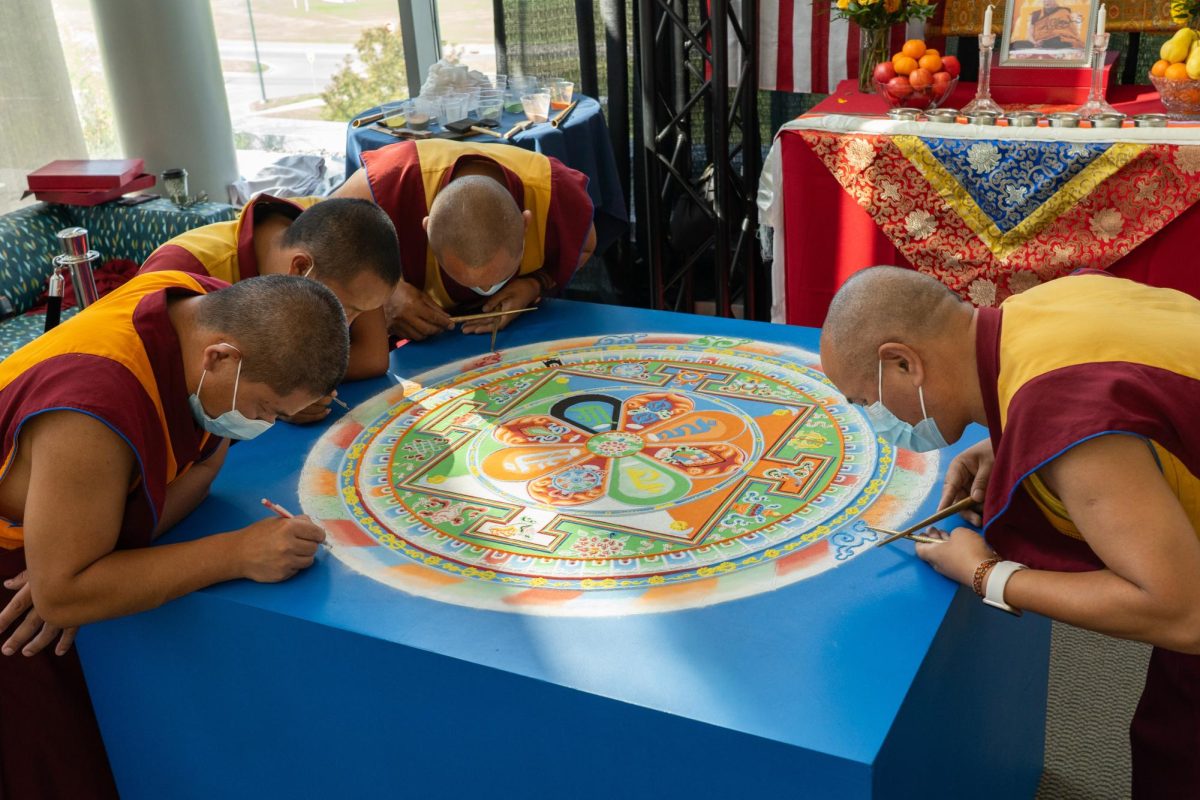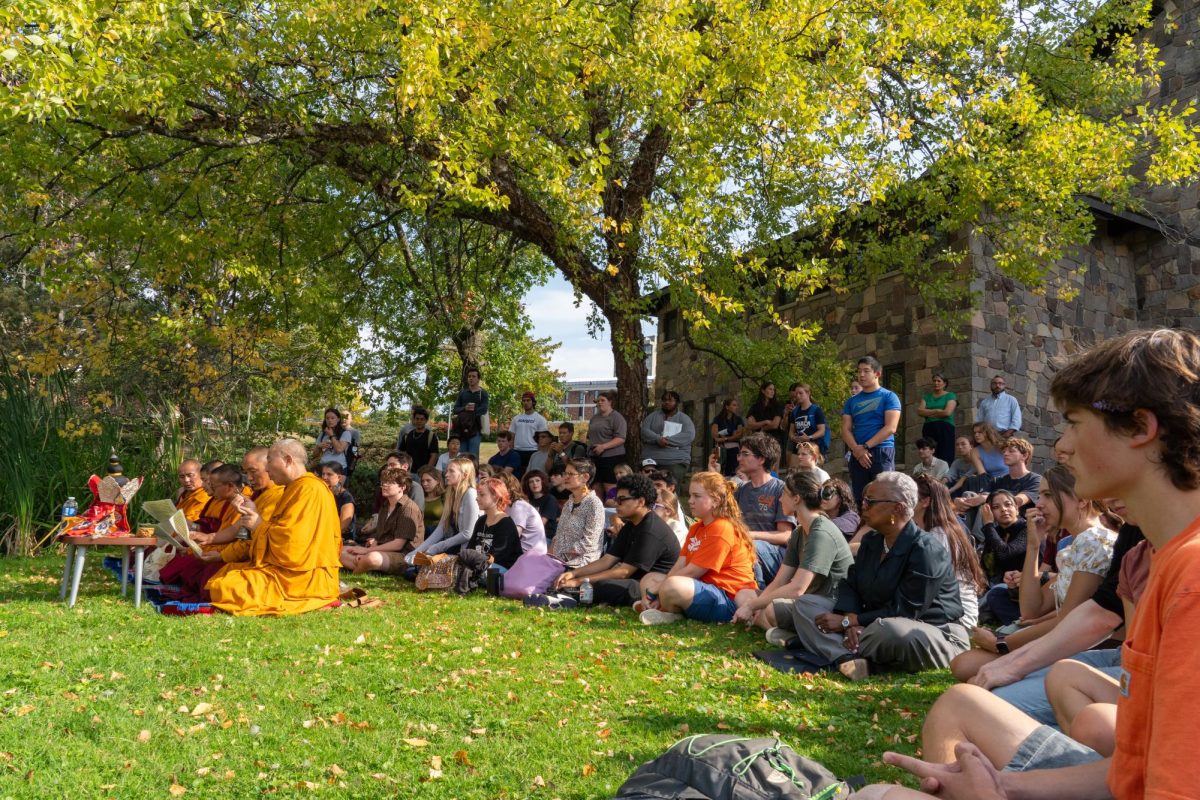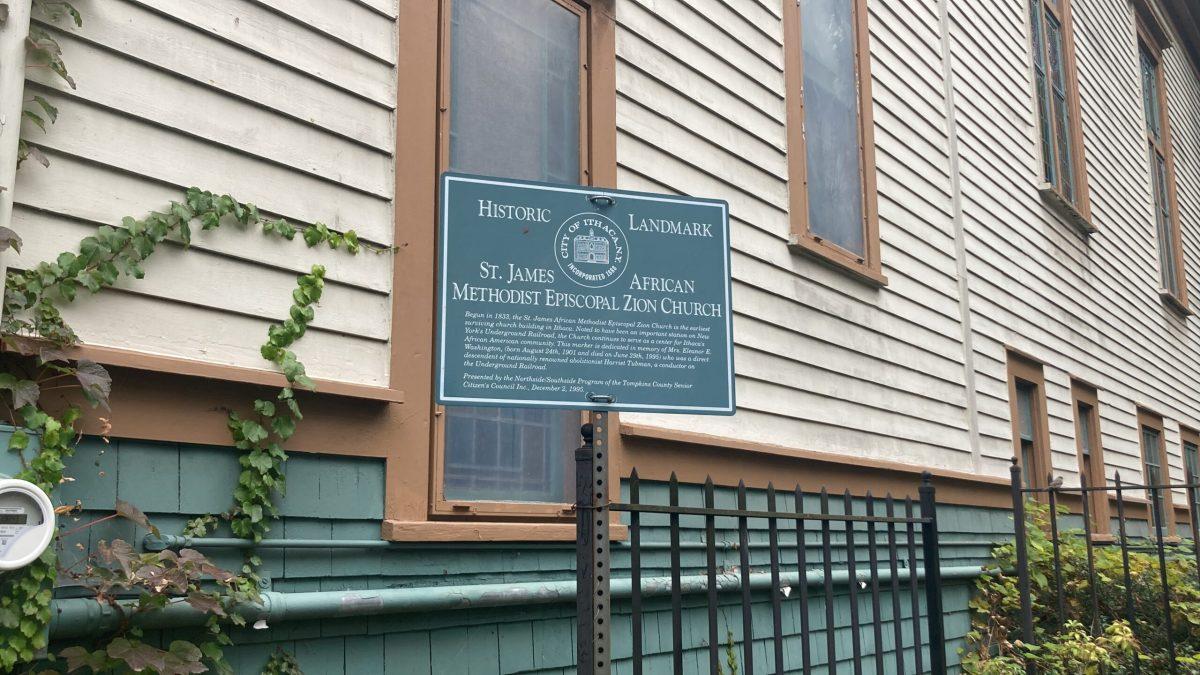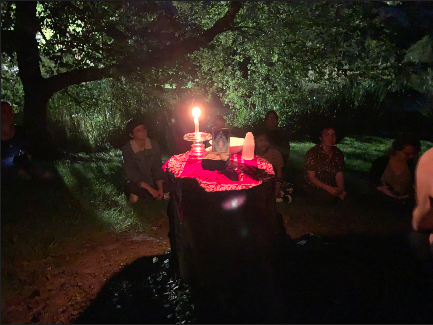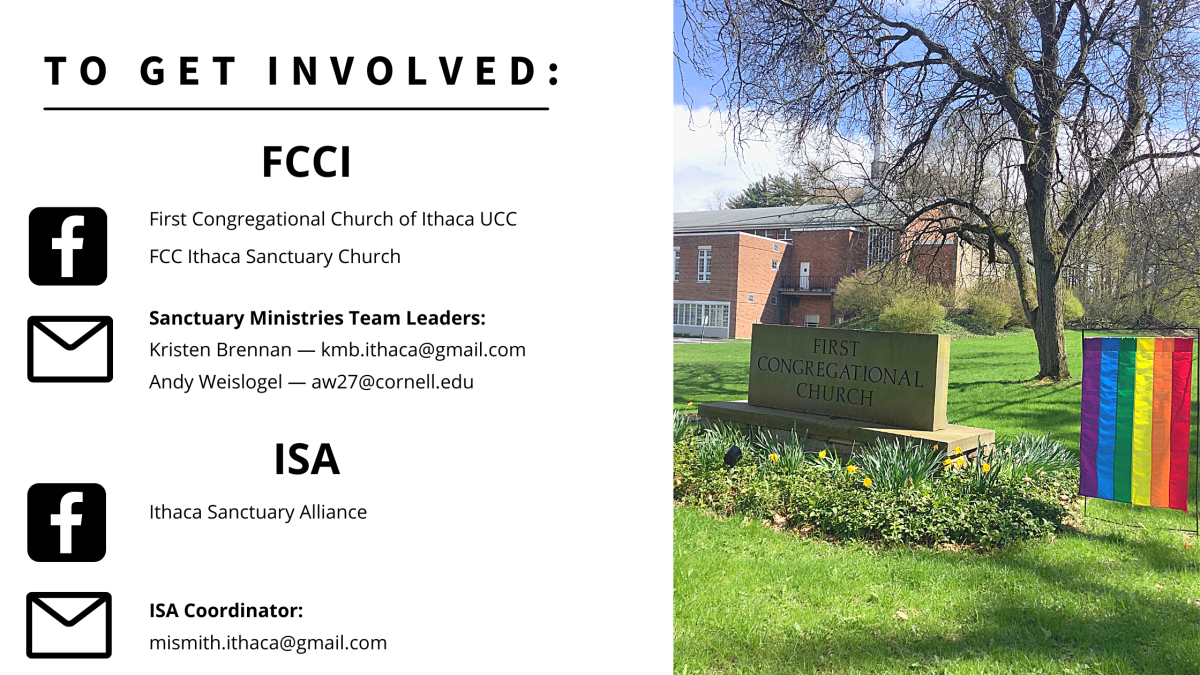Every fall at Ithaca College, students are curious to see new guests in the Campus Center dining hall: Tibetan Buddhist monks. The monks can be seen eating lunch with students, sharing food and conversation during their breaks from creating an elaborate and beautiful sand mandala.
In September, students, faculty, children, and adults came to the IC Business School atrium to watch the mandala slowly unfold over the course of six days.
Attendees had the opportunity to attend several events centering around Tibetan Buddhist culture and practices. The Sand Mandala Planning Committee, comprised of IC students, Eric Steinschneider, and Diana Dimitrova worked together to plan these events.
The practice is also accompanied by the meditative sounds of chak-pur, copper and brass tools that hold and release the sand for the mandala. When rubbed together, chak-pur creates a vibration that help the sand flow smoothly onto the table as well as promote concentration for the monks. The mandalas each year are planned according to scripture and chosen with care, usually dedicated to a specific Tibetan Buddhist deity. The dimensions, patterns, and colors of sand are all thoughtfully planned.
Norbu says that making a mandala brings many virtues and merits to monks that participate. “The process of making the mandala teaches us to do the hard work and to focus on one specific thing. And it teaches us community, to work in a group… to do the work steady, fast, and with dedication and full focus… It’s something like meditation. Without focus and without attention you can’t draw well, and you can’t construct well.”
Professor Eric Steinschneider, associate professor in the philosophy and religion department, says this year’s mandala is dedicated to the Bodhisattva (someone who seeks enlightenment) Chenrezig, the embodiment of compassion. He says that compassion is extremely important right now. “I think the need to invoke compassion has never been greater. By coming to this campus and by building this incredible mandala for Chenrezig, the monks have given this campus community such a selfless gift of evoking the spirit of compassion to this campus and into this community and it’s truly incredible.”
“The boundaries of humans in the world are becoming closer,” Norbu said. “Earlier times we stayed in isolated places with our own tribes and families… But nowadays we are connected very closely…Mandalas can be tools to create the atmosphere for us to be more connected, more harmonious, more compassionate, or more important to one another.”
Norbu believes that the mandala should be used not only for individual growth but building connections with others that we wouldn’t normally. “When you look at the Mandala you can feel something, it’s beautiful… So for that, we can attract people to observe the mandala, to see its beauty, and then through that we can share our experiences, thoughts wisdom, knowledge, whatever we have, and we can also learn from those who are there to observe,” he said. “So that’s to mainly create a more harmonious, more peaceful, more warm-hearted place. At the very core of making the Mandala is that.”
There was a great sense of unity and togetherness at the event, with people from all different religious backgrounds coming together to appreciate the tradition and art. Steinschneider believes that in these dark times of separation in our world, things like the mandala event are vital for bringing people back together. Not only were people gathered together, but they had a safe space to be curious, ask questions, and conversate with the monks. Steinschneider also made a point to acknowledge the great Tibetan community that is in our city; another beautiful part of what makes Ithaca so “gorges.”
After six days of hard work to make the mandala perfect and accurate to scripture, it gets destroyed in the dissolution ceremony. This is to teach the monks the lesson of impermanence and detachment. “If you are too attached to something, you will suffer because of your attachment… Your wisdom side of mind is blocked because you do not see things as clearly… Of course, attachment can be good, but too much of something can cause more harm than good,” Norbu said
Dozens of students and community members came to watch this ceremony, sharing prayer with the monks as they performed the dissolution ceremony. The sand was placed in a pile on the mandala table, brought outside to the chapel pond, and released into the water. The mandala sand represents precious jewels, so to put it into the water is a blessing for the beings in and around it. The monks also said that they hoped this blessing would bring good harvest. “After finishing, we feel rejoice that we did something marvelous… The rejoice of making a mandala is something different,” said Jigme.
Norbu said there are sometimes misunderstandings when it comes to his culture. “Personally, when I encounter with Westerners or those who have no idea about what monks are or why we are wearing such strange robes… They assume that we are something different from the rest of humanity… But in reality, we are all almost the same. We have our desires, we have our feelings, and we are also not aware of all the things that are happening in the world.”
Norbu hopes that the campus will use this experience as motivation to go out into the world and be curious about other points of view with pure intentions.
“It can lead you to learn more than just staying isolated and assuming things or judging people by yourself,” he said.

